Beilue Veterans Day column: Former Buff first to fall, killed at Pearl Harbor
Japanese Zero planes suddenly and without warning filled the sky on a sleepy Sunday morning in Hawaii on Dec. 7, 1941. The Japanese surprise attack at Pearl Harbor caught the American Navy, Army and Marines tragically unaware.
Japanese torpedoes and bombs damaged or sunk key battleships of the Pacific Fleet. At nearby Hickam Field, pilots scrambled to get airborne in a futile effort to combat the Japanese Zeroes, who were also taking aim at the American planes.
One of those running for a B-17 bomber was Second Lt. Jay E. Pietzsch of the 26th Bomber Squadron of the Army Air Corps. Just three years earlier, Pietzsch played basketball and football for coach Al Baggett at West Texas State Teachers College.
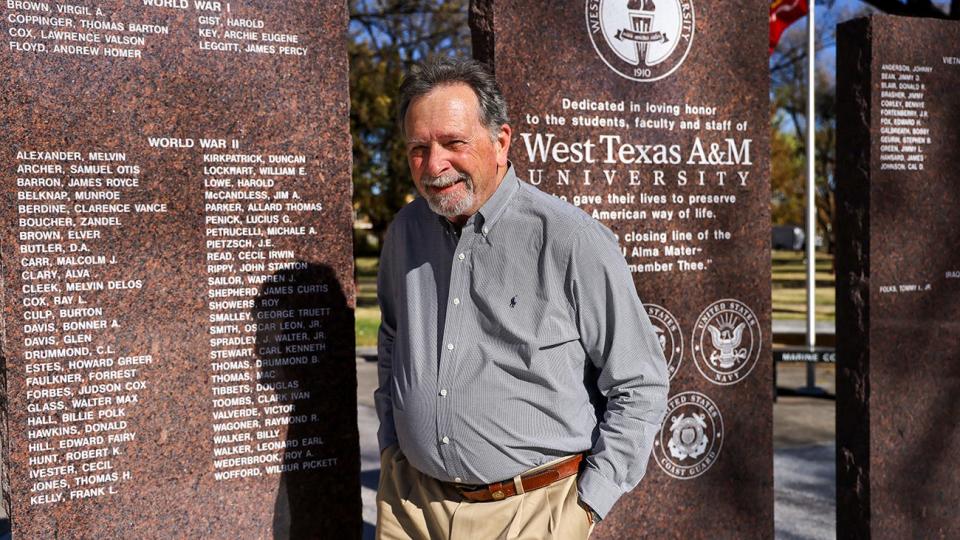
Now the former Gold Gloves state AAU boxing champion was part of a hellish dash to get in the plane and get airborne to do something – anything – against the Japanese.
He never made it. Pietzsch was strafed by Japanese machine guns before the navigator could board his plane. At just after 8 a.m. that December morning, Pietzsch, just 11 days shy of his 28th birthday, died in the arms of a chaplain.
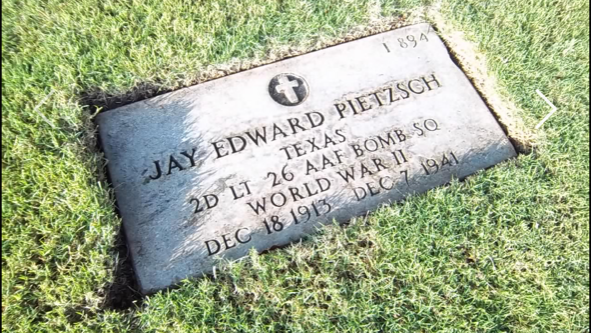
As Veterans Day approaches this weekend, it is a time to remember those who served and certainly those who died in service. Pietzsch was one of 2,403 killed by the unprecedented attack. Even though the United States entry into World War II would not be officially declared until two days later, Pietzsch is recognized as the first Texan killed in the war and the first from what is now West Texas A&M University.
The name of Jay E. Pietzsch (pronounced Peach) is one of 88 names inscribed on the WT Veterans Memorial southeast of Old Main. The memorial was dedicated five years ago this week. Among the names are 54 from World War II.
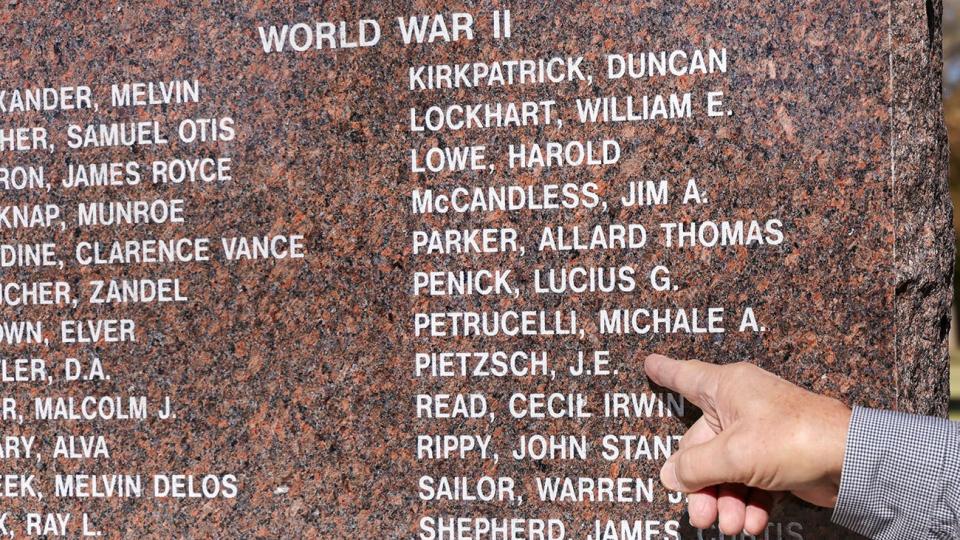
Pat Richmond of Amarillo is one of the few living descendants of Pietzsch. Bea Christian, Richmond’s grandmother, was a first cousin of Pietzsch. Richmond represented the family at the WT War Memorial dedication in 2018 and will do so again in ceremonies Friday.
“He was who, according to my grandmother, everyone was so proud of,” Richmond said. “Not just because he was family, but for his accomplishments both in the service and in athletics. They were proud of the man he was.
“We have had a lot in our family serve from World War II to the war in Iraq, and we’re proud of all of them, but Jay was our family’s hero. He could have been so great, but his life was cut short.”
Men and women become military veterans for different reasons. They are drafted. They are motivated by acts against the United States. They see the military as a means for the future, possibly as a career or the GI bill for higher education later. Some need to escape. Some need a new start.
Piecing together Pietzsch’s short life is like a scavenger hunt – there’s a yellowed newspaper clipping here, photos from an old WT yearbook there, some typed summarization, an online record.
He joined the Army in late 1940. There was not a fervor for the military at that time. While war raged in Europe and the Japanese were expanding their reach militarily in the Pacific, the majority of Americans wanted nothing to do with another foreign war. The horrors of World War I, where 116,500 Americans died in just 19 months in 1917-18, was too fresh.
Pietzsch was proficient in mathematics. That skill may have been one reason he chose the Army, and a reason he eventually became a navigator in the Army Air Corps, a forerunner to the U.S. Air Force.
In 1940, the registrar at WT received a Western Union telegram from the Chief of the Army Air Corps:
“Jay E. Pietzsch who attended your university in 1938 has applied for specialized training in the army air corps (stop) Necessary to know mathematical subjects pursued and grades attained to determine his suitability for such training (stop) Would appreciate telegraphic report government collect chief air corps Washington D.C.”
To which WT telegrammed back: “We can commend him to you.”
On Dec, 9, 1941, two days after his death, one day after the U.S. declared war on Japan, a front page story appeared in the Amarillo Daily News with his name misspelled: “Jay Pietzch of Amarillo First Known Casualty.” There was a photo of Pietzsch in his WT basketball uniform wearing “Buffaloes 30” on the front.
Pietzsch was the son of Otto Pietzsch and Ruth Whittenburg. They moved from near Waco to Plemons, a small community outside Borger, a few years before their son was born in 1913.
Ruth died in 1921 when her son was not quite 8 years old. He was raised by a single father and matured into a student and athlete. He graduated from Borger High School in 1932. Pietzsch first went to Amarillo College where he played both basketball and football.
After a year at Hardin-Simmons College in Abilene, he returned to the Panhandle as a math major and two-sport athlete at WT. Actually, he was a three-sport athlete. At just more than six feet tall and stocky, he had the physique of a boxer.
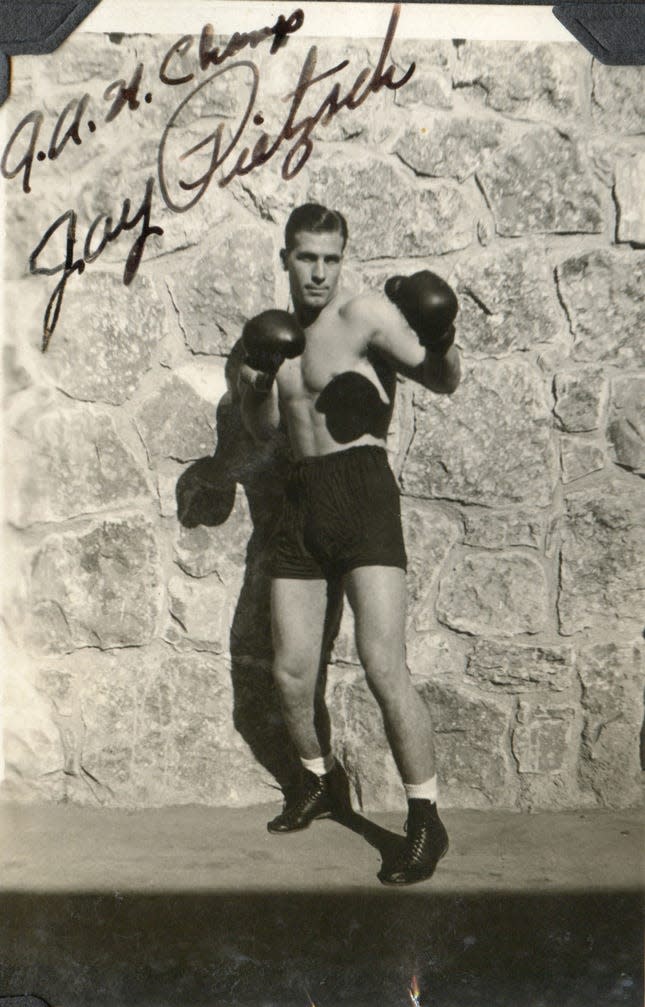
In the late 1930s, boxing was a huge sport not only in the Panhandle, but across the country. He was an Amarillo Golden Gloves champion and a state champion. As Frank Godsoe, sportswriter of the Amarillo Daily News, gushed: “He opened up with padded fists blazing a spray of leather at his opponent’s jaw.”
In 1949, the Jay E. Pietzsch Memorial Award was given to the heavyweight champion of the Amarillo Golden Gloves tournament. A plaque that hung at the old Municipal Auditorium in Amarillo fell into disrepair in the 1940s. In 1954, the Amarillo Disabled American Veterans chapter presented another plaque to hang in the auditorium where Pietzsch had many of his boxing matches.
“Those who gave their lives for this country should not be forgotten,” said Amarillo mayor Bud Curtis at a small ceremony. “This plaque will not be tarnished.”
The auditorium was razed in the early 1960s and the plaque was likely lost with it.
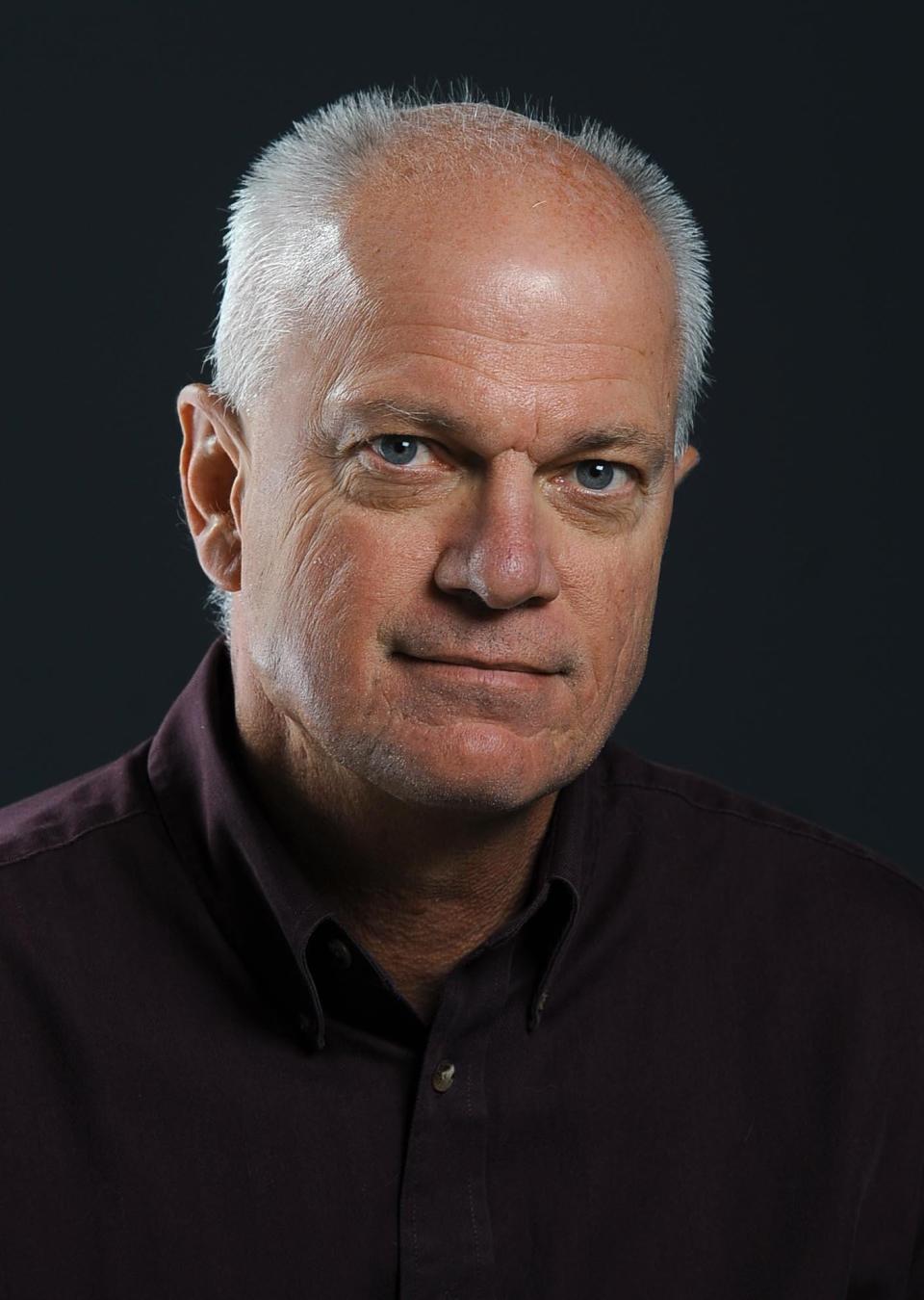
Pietzsch never made it home. Like many who died at Pearl Harbor, he is buried in Punchbowl Crater, the location of the National Memorial Cemetery of the Pacific in Honolulu.
Like his time at WT, Jay E. Pietzsch’s service in the Army Air Corps more than 80 years ago was brief, but his call to duty was gallant – and historical.
Editor's note: This column originally appeared on the WT website.
Do you know of a student, faculty member, project, an alumnus or any other story idea for “WT: The Heart and Soul of the Texas Panhandle?” If so, email Jon Mark Beilue at jsbeilue@yahoo.com .
This article originally appeared on Amarillo Globe-News: Veterans Day remembrance: former Buff killed at Pearl Harbor

